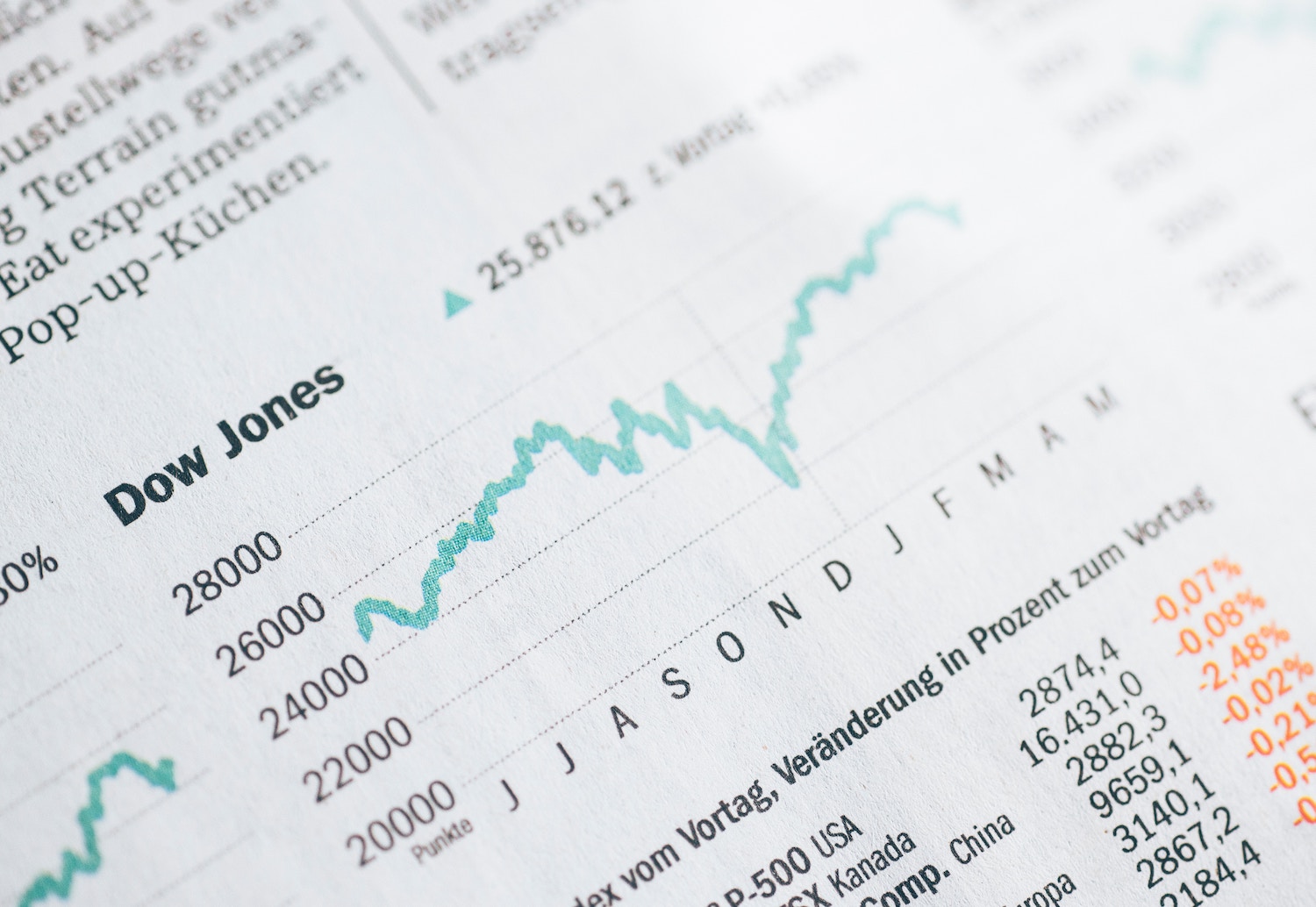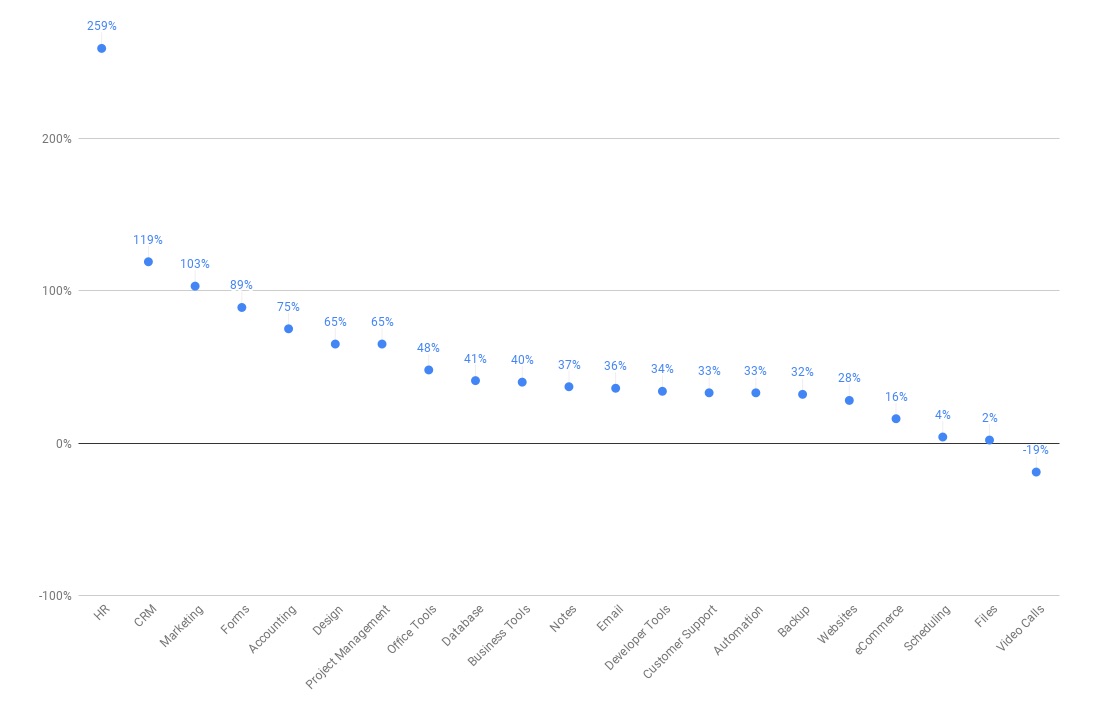Don't you think: programs really have become more expensive
Software Inflation 2009 to 2019

Today's dollar is worth a little more than tomorrow - we know this from childhood. But, not least thanks to Moore’s law, technology has turned this equation upside down. Every year, household appliances, computers, telephones, televisions offer us more and more opportunities - and often for a lower price. We are used to the fact that you can wait with the purchase of equipment. There is a chance that tomorrow it will become better and cheaper.
But perhaps this is not so. Over the past decade, software prices have gradually climbed up. We studied hundreds of business applications, and on average their price increased by 62% - even if we take into account applications whose cost has not changed or decreased. And if you pay for an application whose value has increased, there is a high probability that today it costs 98% more than ten years ago.
Don't you think: programs really have become more expensive.
Free offers (with reservations)

There was a time when the volume of Gmail storage grew daily
Not much else attracts attention, as a free product improvement. Physical goods were not seen in this; it would be absurd to even suggest such a thing. Ice cream tasting - no matter where you go, but free Tesla? Can not be.
But in the software world, free software, or at least price reduction, has been the norm for many years.
In 1995, you had to pay AOL $ 17 per month for email (along with dialup Internet access - although there were other ways to create your own inbox then). Hotmail then made the email free. Then in April 2004, Google began to distribute free email with 1 GB of storage, which seemed unlimited compared to 2 MB from Hotmail. And as if that weren’t enough, Gmail daily increased free space so that it did not end with you.
This feeling, when you get something almost for free, has reached its climax with the advent of the App Store and early web applications. The official software in the store could cost hundreds of dollars, and suddenly the world was filled with applications worth $ 9.99, or $ 0.99, or even free. Even professional software often began to have free access with generous feature suggestions. When in 2009, Wired editor Chris Anderson wrote “If the product is digital, then sooner or later it will be free” in the book “ Free: The Future of Radical Prices ”, this statement seemed like a new axiom for pricing software.
And then everything collapsed. $ 0.99 apps turned into $ 0.99 apps per month; the ever-increasing volume of Gmail stopped at 15 GB in 2013, and has not grown since then. Your iPhone is full of photos, and although iCloud Drive is not outrageous, it seems almost wrong to pay for technology, when for decades we have been taught to expect more for less. It seems like suddenly everything started demanding a subscription from us.
However, free distribution often turns into a strategy, a means, not an end. Apple distributes software to sell devices; Google is giving away storage space for you to store more and more, and eventually switched to paid access. Free software is usually one of three types:
- Open source (free to use, but you need to host it yourself - often comes with the option of paid hosting or support services);
- Freemium (free plans are a decoy, for example, like Dropbox, when the provider hopes for your upgrade or payment for the contents of the applications);
- Software is not a product (Apple's software that comes with devices, ad-based social networks, consumer apps, simple apps that advertise a larger product, as is the case with HubSpot CRM).
Giveaways are a good way to attract consumers. But because of it, software may seem even more expensive when you have to pay for it. This transition to paying for applications that we used to use for free, perhaps, sets off so much the cost of software.
Software inflation: faster than real-world inflation

This first transition to having to pay for software can hit the wallet - but even worse when you have to pay for the same software. It’s the same as going to the store and feeling how all the products are becoming even more expensive.
Over the past decade, prices in the United States have risen by an average of 19%. Among the record holders - the cost of rental housing (+ 28%), the cost of medicine (+ 31%) and education (+ 166%) make life much more expensive, and smaller things such as milk (+ 8%) join them and coffee (+ 4%). On the other hand, many things are cheaper today. Bananas fell in price by 5%, household appliances by 14%, TVs - by 84%.
Software prices, on average, have risen by 62% over the past decade — three times faster than inflation, and have even surpassed rent and medicine. Today's iPhone XR costs 25% more than the iPhone 3GS in 2009 (or 67% more in the case of the iPhone XS). Some applications have risen in price much more strongly, and even if you remove those that have become more expensive by 200% or more, the average growth will still be in the region of 42% — more than twice the inflation rate.
If you paid $ 2.75 per gallon of milk in 2009, today it costs about $ 2.99 - and the best-selling TV at Best Buy with a 40 "screen, which in 2009 cost $ 999 , today costs $ 149 , and a 40" TV with a resolution of 4K - only $ 299. But if in 2009 you paid $ 9.99 per month for a business program, today you most likely pay $ 16.18 per month, or even $ 19.78, for it.
Of the hundreds of business applications we studied, 67 raised the price by an average of 98% over the ten years from 2009 to 2019. Fourteen lowered the price by an average of 28%, and 19 left the price unchanged.
Cheap applications on average grew faster than expensive ones; they more often rose by $ 5. If you bought one account per application in 2009, you would pay $ 4655 / month. In 2019, you would already pay $ 6202 / month, which is 33% more.
Interestingly, if the applications you use in principle increased the cost, then in the last decade their price has doubled.
It would be nice if applications always got cheaper and better - and this still happens in some categories, such as video calls. The GoToMeeting plan, which allowed in 2010 to chat with 15 people via video, costs 26% less today and allows you to connect 150 people already. But this, unfortunately, is an exception.

Software Inflation by Category
Several categories of software rose in price faster than others. HR (+ 259%), CRM (+ 119%) and marketing applications (+ 103%) went up the most, and video calls (-19%), file synchronization (+ 2%) and schedulers (+ 4%) became cheaper, or slightly increased.
Prices increase every few years. Most of the changes occurred in 2014, when 19 of the 100 monitored applications went up, and 7 fell in price. In 2016, 20 out of 100 applications went up, and 8 went down. In 2019, while 23 applications have risen in price, and 7 have fallen in price.
It also happens that an application that, in principle, has not risen in price, has become more expensive to use, since the plan offers you fewer options than before. Intercom's original 250 contact plan now lets you use 200; Infusionsoft lowered the bar even further, from 10,000 contacts to 2,500 for the same price. This is the equivalent of a constantly decreasing distance between seats in airplanes in the software world.
Changes seem even more dramatic if applications first reduced prices and then increased, as 17 applications did. Their current price may not differ much from what they had ten years ago - but it seems higher if there was a discount somewhere in the middle.
And you can’t get out of this game. Previously, applications such as Microsoft Office or Photoshop could be bought in a “boxed” version and used forever, but now a subscription requires periodic payment for their use. And often, subscriptions cost as much as buying all the upgrades in the past . Microsoft Office averaged $ 8.76 / month (or $ 12.36 adjusted for inflation), which is comparable to today's Office 365 base business plan at $ 8.25 / month. Adobe Photoshop cost $ 11.40 on average (or $ 16.76 adjusted for inflation), and today Photoshop and Lightroom can be bought together by subscription for $ 9.99. But at least before it was not necessary to be updated. And today it is necessary, regardless of whether the price fits into your budget.
At least you get more
However, at the same time, it is easy to forget how much the equipment has become cheaper compared to what it was several decades ago. Instead of paying $ 199.95 for VisiCalc, today you can use Google Sheets for free, and the whole Microsoft Office costs only $ 5.99 / month. 20 years ago, it was impossible to store files online without a dedicated server; 10 years ago Dropbox cost 25 cents per month per GB, and today the average gigabyte of online storage costs 0.6-2 cents.
It’s not to say that the pricing of software is clear that today you will get the best quality for your money, or that you don’t need to worry by adding another subscription of $ 9.99 / month to the constantly growing monthly bills.
However, when Dropbox goes from $ 9.99 / month to $ 11.99 / month, it's not as wild as it sounds. In this case, the cost increased along with a 40-fold increase in storage volume. Even apps that offer roughly the same plans today include more features and work better after a decade of improvements. Today, GitHub and Basecamp cost more, but the first has an unlimited number of repositories, and the second has projects.
But this situation is reminiscent of the cost of cable television: you get more, although you probably would like to receive less and get only what you need.
Constantly growing software bills
In the end, all we pay attention to is the amount in the invoice. And if it seems to you grown up, you are not alone. Software over the past decade has actually become much more expensive on average.
Perhaps early applications cost too little. Perhaps the cost of software production has increased. Or the software got better — enough to justify the higher cost by a proportional increase in our productivity. In any case, in an industry in which we have long been accustomed to receive more for less money - and where this rule is still true for most physical products - software grew in price three times faster than inflation. And it is very difficult to ignore.
All Articles